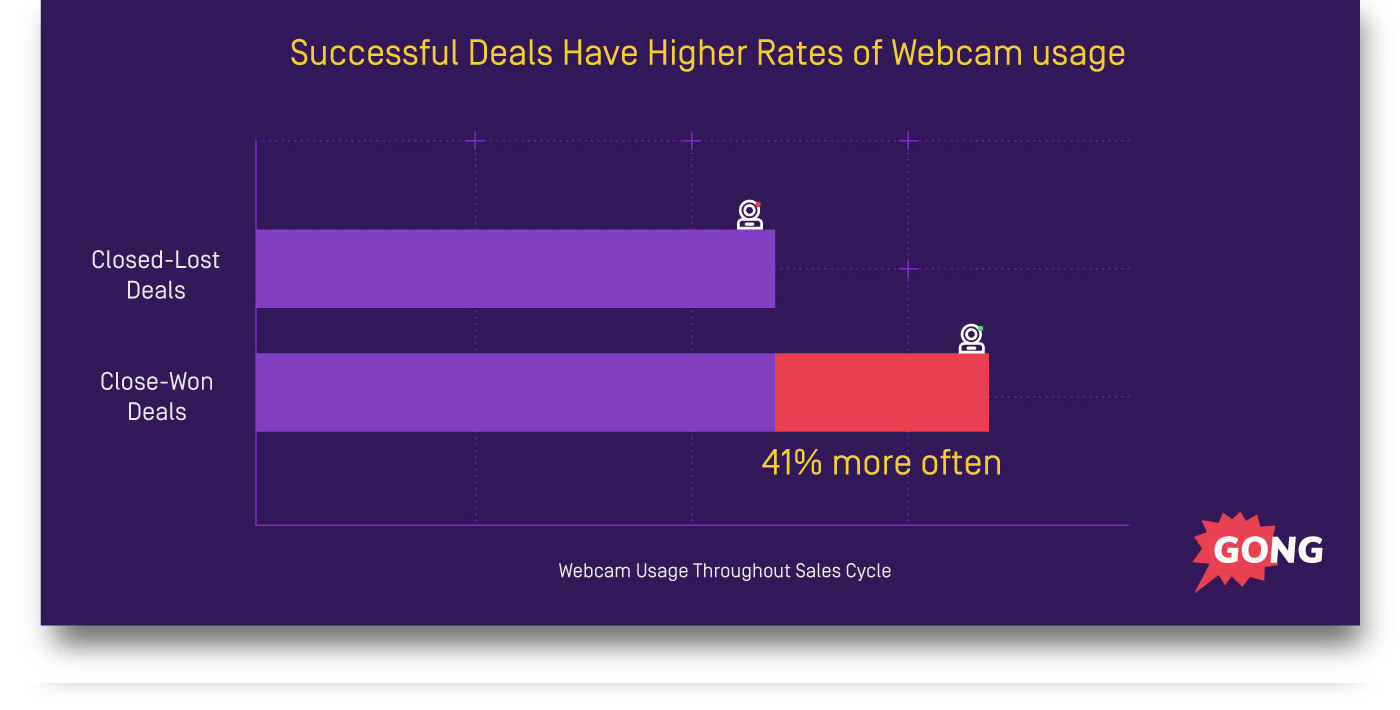Sell more by bridging the emotional gap between you and your customer
Radiology is one of the loneliest disciplines in medicine. Most days radiologists can be found in dark rooms, staring at high-resolution images of X-rays, CT scans, and MRIs. With little face-to-face contact with patients, they engage in a highly critical but mainly clinical exercise where actual people are represented by inanimate reports and images. But back in 2008, a young Israeli radiologist named Yehonatan Turner decided to conduct an experiment. With the permission of 300 patients, he attached their photos to the radiology scans. What he found was that in instances where the photos were attached, incidental findings (that is, abnormalities that the radiologist wasn’t instructed to look for) increased 80% compared to the same scans with no patient photos.
The reason for this phenomenon is a concept known as abstraction. Simply put, it’s the idea that people behave differently when the circumstances or intimate details surrounding a situation are less personal or tangible. It’s the same reason why people tend to become easily enraged when behind the wheel of a car, even though they wouldn’t act that way if they knew the other driver was their mother. It’s the reason why people don’t give charity to third-world countries, having never experienced what it’s like to walk through an impoverished village. It’s also the reason why buyers are predisposed to hating salespeople.
Like it or not, abstraction is alive and well when it comes to the relationship between modern buyers and sellers. Abstraction causes buyers to equate sellers to the stereotypical sleazy and self-interested used car salesman, rather than an honest person looking to help them. On the flip side, it causes sellers to make invalid assumptions about the needs of their customers. It fuels confirmation bias which is the silent killer when it comes to performing high-value discovery.
If you’re looking to reduce the abstraction gap and foster a more intimate way of connecting with your customers, here are three ways to ensure you prevent drowning in the sea of sameness.
1. Visit your customers in person as often as you can (if you can)
Back at Salesforce, I took on the leadership responsibility of fifty bright, enthusiastic sales reps. To kick things off, I met with each rep to better acquaint myself with them and our region. One of the questions I asked each of them was, “If you could go back in time and give your day-one self one piece of advice, what would it be?” Hands down the most common answer was, “I wish I had gone into my territory to meet my customers in person sooner!”
Regardless of how charismatic your phone personality is, something magical happens when we meet people in person. With the virtual layer of abstraction and distance removed, your customers cease to be fields in your CRM and become human beings you can more deeply understand and build relationships with. In contrast to phone or email conversations, when you meet customers in person they are more likely to share strategic and personal insights about their business and potential motivations for investing in your solution. Not to mention, feeling a sense of personal accountability to call you back!
But if customer travel isn’t feasible due to your role, business model, or pandemic restrictions, see point #2!
2. Conduct discovery over video
If customer travel in a post-pandemic world isn’t in the cards or isn’t part of your role, conducting calls over video can be just as effective in many instances. Video conferencing tools are accessible and affordable these days and, like live visits, can help significantly increase the level of intimacy between buyer and seller. This is particularly true when it comes to conducting solution discovery calls. That’s because the value and efficiency of our discovery conversations are maximized when both parties can more quickly develop trust and rapport. Critical insights flow more freely as both parties assess mutual fit.
In some instances, video calls can actually be more effective than live meetings for one simple reason: the background. Ever notice that when you’re on a voice-only call, you often start the conversation by talking about the weather? That’s because, without any visual cues, the weather is one of the most humanizing topics with which to kickstart a rapport-building dialogue. But often when you’re on a video call, there’s something intriguing happening behind the other person. Perhaps it’s an interesting piece of artwork (like the image behind me in many of my videos), a view outside, or better yet, their office environment. Either way, what’s happening around them can be, in the worst case, a conversation starter, or in the best case, more deeply humanizing than what you might uncover in a phone meeting.
It’s not surprising then that the team at Gong.io found that, after analyzing 121,828 web-based sales meetings, closed deals involved webcams being used 41% more often than lost deals! They also found that top sales reps spend more time during their meetings having face-to-face discussions on camera.

Hoping to use video to do some cold prospecting outreach or trying to reengage a customer that’s gone dark? No problem! Awesome tools like Vidyard’s Free Video and Screen Recorder allow you to record short videos and send them to customers across a variety of platforms (e.g. text, email, LinkedIn, etc).
Still not sold? Ask yourself; is my customer more or less likely to share more intimate details about their environment over video as opposed to a voice-only call?
BONUS VIDEO: The massive benefit of conducting discovery over video
3. Get customers to share first-hand stories with your team
Adam Grant, a management professor at the Wharton School of Business, conducted an experiment to highlight the power of getting closer to your audience by removing abstraction. In it he had students who received scholarships funded by alumni donations share first-hand, life-changing stories of how the scholarships impacted them with the fundraising reps. The result, a 400% increase in average weekly donation revenue!
Case studies, testimonials, and ROI calculators are all great tools to help your sales team communicate the value of your solution to customers. But in order to truly muster the intoxicatingly high-conviction that modern sellers need to operate with, there is no source as powerful as a customer story told by the person who experienced the value first-hand. In the book Leaders Eat Last (one of my top sales reads), author Simon Sinek outlines a similar rationale. “As social animals, it is imperative for us to see the actual, tangible impact of our time and effort for our work to have meaning and for us to be motivated to do it even better.”
As modern sellers find our solutions increasingly drowning in the sea of sameness, developing truly meaningful connections between modern buyers and sellers is becoming more important and challenging. If the emotional distance between you and your customers is becoming too great, using these three tips can be just what you need to remove the layer of abstraction and get this critical relationship back on track.
We promise never to send you junk or share your email! Just helpful sales insights.














Any tips on how to convince customers to do a video call when the default is audio only? I agree video calls are far superior, I just don’t know of a slick, reproducible way of moving more of my calls to video ones…..
I see two options:
1. Play up the benefits of a video call. i.e. the ability to show them product, documents, etc. They help the calls go better because they add more value to the customer
2. Just ask! Say YOUR default is video because it’s more engaging, etc and your customers prefer it. In my experience, most people don’t have an aversion to video. They simply don’t default to it because calls have been the norm for so long.
That said, in my business (for example) video is the default. At least 80% of my calls are video and the voice calls happen mostly because one of us is in transit.
We use Zoom for nearly all sales calls. It has an option to automatically turn on everyone’s video when they join. Do you recommend prodding people into using video with settings like that or just turning mine on so at least they can see me?
Hi Liam, good question! My preference is to:
a) let the customer known in advance that you’d like to do a video/webcam call and give a reason why (i.e. you always like seeing customers face-to-face, it makes it more valuable for them because it allows you to also show your screen, share documents and concepts more easily, etc). Reduces the element of surprise
b) if you haven’t done a) then start the call with the webcam off and turn it on when they join after you’ve asked them to do the same (sometimes people have technical issues or they are additional people on the call who weren’t aware you’d be using webcam). I’m personally not a fan of one-way video calls (i.e. where they can see you but you can’t see them) but that’s my preference. I know others may not mind as much.
Overall, the most important thing is the customer’s level of comfort. If they’re not comfortable with it, don’t force them.